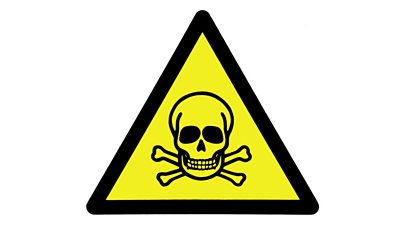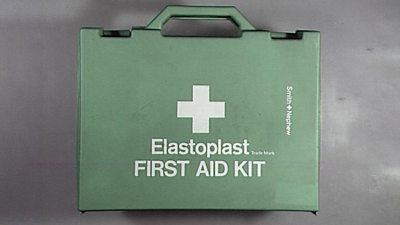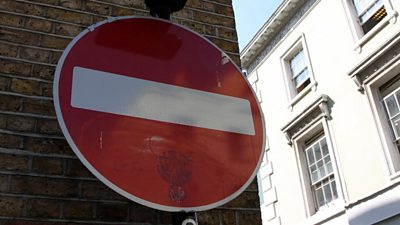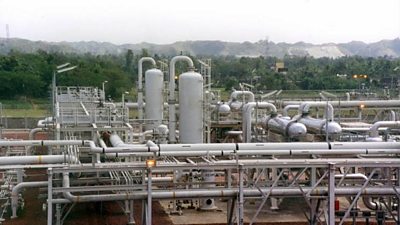The range of hazardous substances we may come across is huge and includes, for example, fumes from soldering in our engineering workshops, chemicals in paints and adhesives when constructing sets, biological agents when gardening or on farms, laboratory chemicals in science shows, or dusts on makeover shows.
Some will come within purchased products, some will be created as bi-products of processes, and yet others will be naturally occurring. Some will have acute effects on health, some chronic, and some delayed effects. Thankfully, there are some general principles of control we can apply to all of these to help prevent or minimise personal exposures.
What Can Go Wrong?
- Acute ill-health or injury, for example, chemical burns, allergic reactions, neurological effects
- Chronic ill-health, for example, disease / infection, organ damage, cancer, dermatitis
- Harm to the environment
- Increased fire risk.
Legal/���˿��� Requirements
- requires employers to assess the risks from exposures to hazardous substances, prevent or adequately control any exposure, monitor the control measures and, as necessary, arrange suitable health surveillance.
Control Measures
Understand the hazard
- Find out what it is your teams may be exposed to
- For purchased products, check for the danger symbols on their containers or packaging (typically an orange square with warning statement / pictogram, though some now display the international red diamond symbol) – these products are classed as ‘dangerous to supply’
- Products which are dangerous to supply must come with guidance on the hazards they present and how you should handle, use, store and dispose of them safely to minimise the personal exposure risks. This information may be on the packaging (for simple products) or as a separate material safety data sheet (MSDS) (for the more hazardous / complex products)
- MSDS's can be hard to understand, but the key information you’ll want to know is:
- what’s in it (chemical names)
- which routes of entry into the body present the greatest risk (e.g. inhalation, skin absorption, ingestion)
- what are the ill-health effects it causes
- what first aid measures should be taken following exposure
- does it present a fire risk
- what harm might it do to the environment if released, including to drains and waterways
- how do I dispose of it safely and legally.
- If the hazardous substance is not a purchased product but is, for example, either released as a by-product of a process (e.g. colophony fumes when soldering, combustion products from diesel generators, wood dust when cutting) or it is naturally occurring (e.g. fumerole outgassing on a volcano, bacterial infection from farmed animals), you’ll need to find out the 'key information' some other way. Your Safety Adviser may be able to help, but if the exposure risks are complex and/or expected to be significant, you will likely need to engage an expert to assess, monitor and report on these risks (e.g. air quality sampling in a sewer location, asbestos surveying when it is proposed to disturb building materials, etc.).
Prevent or Minimise Exposure
- Where you know a hazardous substance is going to be present, you need to assess the personal exposure risk - this will depend on a number of variables, including the nature and period of exposure, existing protective measures, and possibly the age / health condition of the individual (particularly if these pre-dispose them to the ill-effects) - an MSDS is not a risk assessment
- Before going into any detail with your assessment however, think about whether you can simply avoid using the substance, or if you can substitute it with an alternative product which is less harmful / toxic, for example, using a water-based paint instead of a solvent-based one, or use an adhesive which doesn’t contain a chemical with ‘irritant’ properties
- If avoiding the hazardous substance isn't practical, is there anything you can do to minimise personal exposure, for example, can you:
- handle or use it in a way to minimise skin contact e.g. use a brush rather than a cloth to apply a liquid, use a more dilute concentration, mix in an enclosed container, decant it carefully to minimise splashes
- minimise the risk of inhalation e.g. use a local extraction system to collect fumes at source, use a vacuum cleaner to collect dust rather than a brush, use water to damp down dust before sweeping up or when cutting masonry, increase general dilution effects by opening windows
- ensure good housekeeping and hygiene practices e.g. clean and disinfect surfaces which may contain biological agents, mop up spills right away, ensure lids are kept on containers.
- The control option of last resort is to use personal protective equipment (PPE) to put a barrier between the person and the substance – this could include, for example, a mask to minimise the inhalation / ingestion risk, or gloves / goggles / overalls / boots to minimise the skin absorption risk. PPE type and quality varies enormously, so make sure you get good advice on what to use, that it is within any ‘use by’ date (some filters for example have an expiry date), they fit well and are compatible with other work equipment. Safety Equipment Stores can supply most forms of PPE. Check with your if you have any queries
- For most substances, the severity of the ill-health effects will be directly related to the level of exposure, so the general principle is to control exposure to as low as reasonably achievable (the ALARA principle). However, for some hazardous substances, the ill-health effects can be grossly disproportionate to the level of exposure – these include sensitisers, carcinogens, infectious agents, asthma triggers, etc. - and in these cases, expert advice is likely to be required to advise on safe use (e.g. from environmental scientists, medical practitioners, industrial hygienists)
- Once ready, collate the information on hazards, exposures and control measures in your risk assessment form. Structured ‘Control of Substances Hazardous to Health (COSHH) forms’ are available which some may find helpful (see Useful Documents)
- Whenever people are exposed to hazardous substances, there must be some form of management monitoring and user reporting to ensure that the control measures are working and ill-health is not resulting. Exposure to some hazardous substances may also require some form of
- The risk assessment should identify the measures to take in the event of accidental release / personal exposure, including first aid treatment. Some occupational diseases and health conditions are reportable to the HSE under RIDDOR, and some regulations impose the keeping of exposure records for a proscribed period (e.g. 40 years following inhalation of asbestos fibres).
Division Specific Issues
- Incorporating Radio OB MS M025-09 CoSHH
Useful documents
-
Download of HSG97
Recommended links
Premises and sets topics
-

Sets & Premises safety guide
This Safety Guide collates those of our Safety Guidelines relating to construction activities (on sets or other structures, including under 'CDM') and to the occupation / use of building premises (studios or locations). -
 This site is for ���˿��� Employees or potential future employees only. If you are not a ���˿��� employee or looking for further information regarding ���˿��� Access Services then please click on another page from the menu above, where you can find out more about Remploy.
This site is for ���˿��� Employees or potential future employees only. If you are not a ���˿��� employee or looking for further information regarding ���˿��� Access Services then please click on another page from the menu above, where you can find out more about Remploy. -

Asbestos Management on ���˿��� premises
This is a summary of the way that asbestos is managed in ���˿��� Buildings. It supplements the information about managing asbestos on productions. -

CDM Overview
Legislation to ensure the safe design and construction of structures was updated in April 2015, namely the Construction (Design and Management) Regulations 2015 (CDM 2015) -

CDM 2015 - The ���˿��� Approach
Guidance on the practical application of the Construction (Design and Management) Regulations 2015 across the ���˿��� -

First Aid in ���˿��� Premises
This page describes how first aid is arranged in ���˿��� premises. It supplements the guidance to first aid on productions. It is aimed at people who need to decide what provision to make for first aid on ���˿��� premises. It also provides the arrangements and numbers for contacting ambulances and the National Central Control Room (NCCR). -

Legionella in Premises: Control of
This guidance provides an overview of how water systems are managed in premises to minimise the risks from the Legionella bacteria. -

Permit to Work in ���˿��� Buildings (Restricted Work)
Some work in ���˿��� buildings is restricted and you have to get permission, called a Permit To Work (PtW) to do it. -

Pressure Systems
A guide to pressure systems in buildings. Pressure Systems include all plant/systems that contain a ‘relevant fluid’, defined as steam or gas under pressure and liquids under pressure which become gases upon release to the atmosphere, at a pressure greater than 0.5 bar (about 7psi) above atmospheric (except for steam). Around the ���˿��� there are heating, fuel transfer, compressed gas and hydraulic systems used in program production, studios (e.g. Camera Peds), office and maintenance facilities. -

Sets: Safety of
This Safety Guideline is concerned with the construction and use of production sets and associated scenery used in studios and on locations.
More from SSR
-
Your platform to record accidents, risk assessments, assurance monitoring and inspections
-
Safety Equipment Stores
Just one number to call: 020 3614 5155 -
���˿��� Safety Guidelines
An A-Z of ���˿���'s Health and Safety Guidelines -
Safety Advice Line: 0370 411 0464 Email: safety@bbc.co.uk
- A-Z of ���˿��� Safety Guidelines
- Accident Reporting and Investigation
- ���˿��� Health & Safety Policy
- Contractors (incl. vetted lists)
- Contributors
- Fire Safety
- Freelancers
- Independent Production Companies
- Risk Assessment
- Safety Alerts
- Safety Responsibilities
- Safety Training
- Sets & Premises Safety Guide
Events guidance - key links:
- Exhibitions
- General Guidance
- Indoor Location Recce Checklist
- Outdoor Location Recce Checklist
- Major Incidents & Emergency Planning
- Marketing and Promotional
- Noise Exposure
- Planning and Management
- Responsibilities
- Responsibilities Form
- Laser Lighting Effects
- Strobe Lighting
- Temporary Stages and Rostra
Health topics - key links:
- (���˿��� network only)
- Contributors Fitness to Participate
- Display Screen Equipment (DSE)
- (���˿��� network only)
- First Aid and Welfare on Location
- International Travel - Risks & Health
- Manual Handling
- Mental Health: ���˿���page
- (���˿��� network only)
- Personal Health and Wellbeing
- Pregnancy
- Psychological Trauma Support & Trauma Risk Management (TRiM)
- Tiredness and Fatigue
- Travel Health Contacts
���˿��� High Risk - key links:
- CBRN and Industrial Spills
- Covert Filming
- Crisis Management and Security Support
- Demonstrations, Protests and Crowds
- Disaster Coverage
- Door Stepping
- (���˿��� network only)
- (���˿��� network only)
- Public Order
- Safety Equipment Stores
���˿��� Journalism - key links:
���˿��� Productions - key links:
- Aerial Filming and Airfields
- Animals: Displaying and handling for performance
- Boats: Working on
- Children and Young People
- Driving
- Electrical Equipment and Systems
- First Aid and Welfare on Location
- Food Safety (Cooking and Catering)
- Remote Location Working
- Roads and Streets: Working by
- Security of Productions on Location
- Stunts
- Tiredness and Fatigue
- Unmanned Aerial Systems (UAS aka Drones)
- Vehicles: Recording in, from and around
- Working at Height: Mobile Elevating Work Platforms
- Working at Height: Tower Scaffolds
���˿��� Radio - key links:
- (���˿��� Network only)
���˿��� Security - key links:
���˿��� Sport - key links:
About this site
This site describes what the ���˿��� does in relation to managing its health, safety and security risks and is intended for those who work directly for the ���˿���.
It is not intended to provide instruction or guidance on how third parties should manage their risks. The ���˿��� cannot be held liable for how this information is interpreted or used by third parties, nor provide any assurance that adopting it would provide any measure of legal compliance. More information
Some links on this site are only accessible when connected to the ���˿��� network
